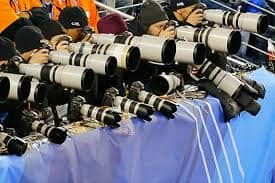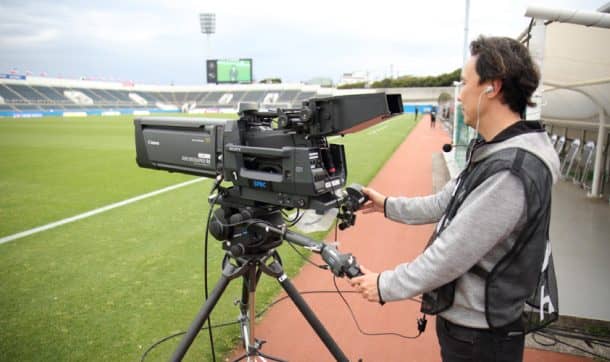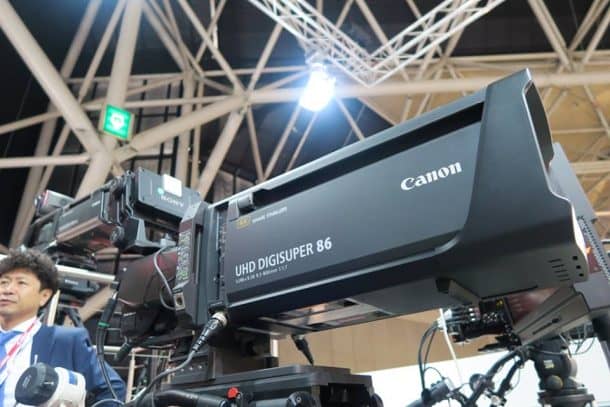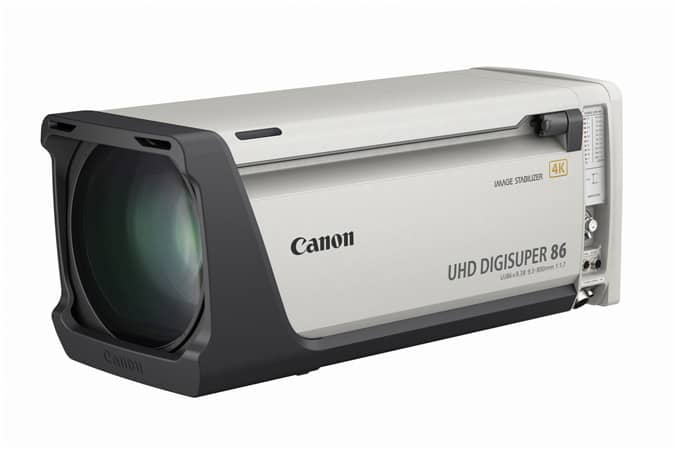On the sidelines of any Olympics events, there are many photographers with huge zoom lenses. Just a lens that is being used there can easily cost around $10,000. They are something every photographer dreams about. But even these lens seem nothing when compared to the massive broadcast lenses which are being used to capture the Olympic games.
The lenses which are attached to those cameras can easily cross a price tag of $200,000. A lot of money is involved in camera lenses, hence one should choose a camera lens for photography with great care

Canon has more than 70 broadcast box lenses in PyeongChang, which includes some of the flagship UHD DIGISUPER 86. It can be bought from the open market at $222,980. The lens weighs 59.5 pounds and is 10 inches wide and 24 inches long. It looks like a toaster at first sight which has a glass at one end. When the light enters the lens, it travels through the elements which are basically individual glass lenses. Each element is responsible for refracting and focusing the light as it travels through the camera.
Larry Thorpe, a senior fellow with Canon’s imaging technology and communications group, said, “Some of our high-end broadcast lenses have 30-40 elements inside.” A typical kit lens that comes with a DSLR has around 10 elements inside it. Light behaves a little oddly when refracted. The prism effect allows splitting a beam of white light into a colorful rainbow. This happens because different wavelengths of light refract at different angles. It can result in an effect called the chromatic aberration. In this effect, the edges of an object appear with a bright green or purple halo. To overcome this effect, Canon uses special materials like fluorite whose refractive index is lower than typical glass and helps to keep light from splitting up while it is travelling in the lens.
Lens elements are usually ground down from rough glass blanks and then polished. They are polished by hand to get rid of any imperfections in the glass. Thorpe told, “We spend a lot more time polishing 4K lenses because imperfections that measure just a nanometer can affect performance.” Fluorine occurs naturally but grows in the form of tiny crystals. Therefore, Canon produces its own fluorine in large quantities. They have been using the material in their products since 1969.
The shape of each element also matters. When talking about a lens, we imagine it to be a piece of glass that has a smooth curve like a contact lens. But a lens of that shape cannot make parallel lines coverage at the same point. However, changing the shape of the lens can help to eliminate the distortion which is associated with wide-angle lenses. It also prevents spherical aberration which is the reason why objects in the center of the frame achieve sharp focus and the objects at the edges of the image appear soft.
Canon also has to worry about the amount of light getting in along with the quality of light the lens is letting in. Box lenses have huge apertures and can let in a lot of light at the same time. The size of a lens’s aperture is expressed as its f-number. The smaller the number, the bigger the aperture. The box lens like the UHD DIGISUPER 86 has a maximum aperture of f/1.7 at its wide-angle setting. It lets more light in than any consumer-grade zoom lens on the market, even the high-end DSLR cannot compete with it. Thorpe said, “Large apertures are a big part of why these lenses are so large. You need a huge front element when you’re letting in that much light.”

The zoom range of these lenses is another reason which pushes the price so high. A high-end zoom lens of a DSLR can reach up to 3x or 4x of the optical zoom. The UHD DIGISUPER 86 has 86x zoom range. The focal length goes from 9.3-800mm. The lens also has a built-in extender that doubles the effective focal length from roughly 18mm all the way up to 1600mm. This zoom can easily focus on the face of an athlete from the other corner of the stadium. The broadcast cameras also use a image sensor that is classified as 2/3-inch and measures 11mm on the diagonal. A high-end DSLR lens with a full frame sensor has a diagonal measurement of roughly 42mm. So the broadcast camera has to manage a lot of pixels in a very small area just to get the HD quality. The demand to push to 4K is making things even challenging. Thorpe said, “In an HDTV world, every millimeter of that image format has to contain 100 black-and-white lines that you can see with decent contrast.”
Before all the polishing is done, Canon uses computer simulations to estimate the build and organization of elements before a grinder even touches the glass. Thorpe told, “A computer considers hundreds of millions of options before we ever build a prototype for a new lens. The computers simulate for months to analyze dimensions and shapes.”
Apart from the glass, there is a lot going on in terms of electronics as well. The lens controls are present on either side of the body. The operator has to keep both hands on each side of the lens. Usually, the zoom is controlled with the right hand and the focus with the left hand. The camera operator is been instructed by the director from the control room on how to cover the scene. Since the lens is controlled electronically, the director can also adjust the iris of the lens from a distance. This helps the camera operator to concentrate on his fast-moving subject.

Electronic servo motors push the groups of elements in different directions when the operator adjusts the focus or the zoom. The lens with Image Stabilization also requires elements to move around inside the lens barrel to combat the natural motions of the massive lens. This is also crucial at the telephoto end of the zoom, a tiny movement can cause so much jiggle that it can make a viewer nauseated. Thorpe said, “The camera operators are extremely skilled. I wouldn’t want to be responsible for tracking a snowboarder flying around on a halfpipe while the world was watching.”
So that’s why these camera lenses cost so much!



